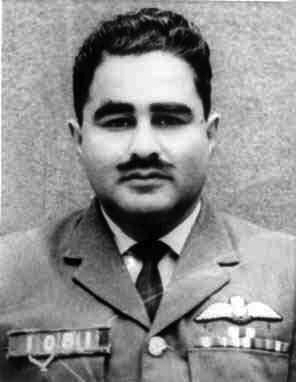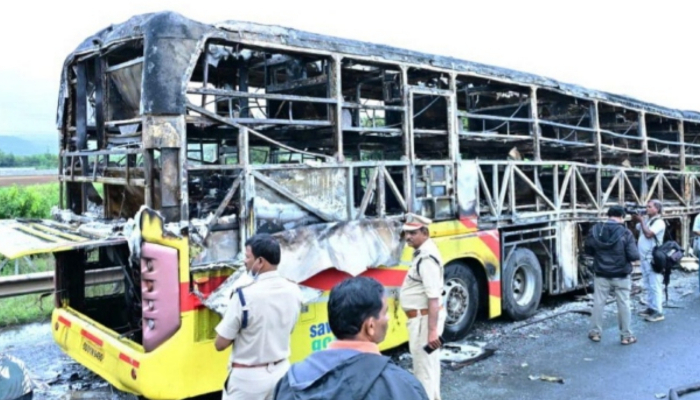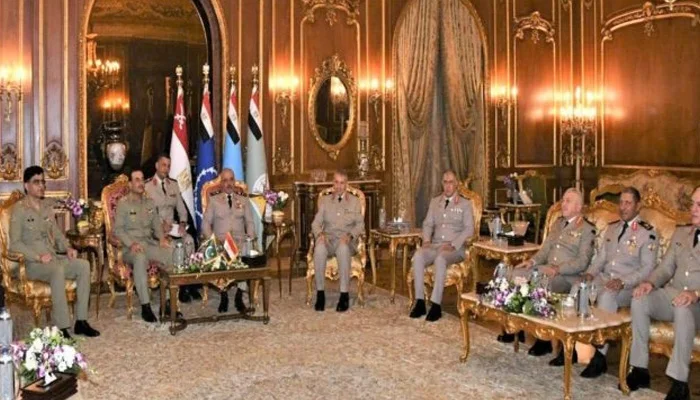“Pakistan will provide its minorities an ample field for the outlet of their genius and they should come forward and play their role as true citizens in making Pakistan one of the greatest nations,” stated Quaid-e-Azam Muhammad Ali Jinnah, famously. This message conveyed hope as well as a challenge. A challenged that the minorities of Pakistan took up boldly.
Christians, who remain a majority among the minorities of Pakistan, have played a leading role in this regard, having excelled in every field of life – be it the armed forces, the civil services, the judiciary, education, sports or the noble professions of the healthcare. The Pakistan Air Force has had the privilege of receiving a very effective contribution from its Christian members and it is, therefore, befitting that we pay our tribute to them.
Air Vice Marshal Eric Gordon Hall

Born in 1922, the young Eric migrated to British India from Burma after the Japanese occupied it in 1942. Having lost his father, an army officer, in the war young Hall enlisted in the ranks of the Royal Air Force. Within weeks his potential was recognised and in December 1943 he was selected for officer cadre and was commissioned as a pilot. For the remaining period of the war he was on active duty with flying colours. After the partition of the Indian sub-continent in 1947, Flying Officer Eric G Hall opted for Pakistan and was initially posted to Risalpur to help train and build up the PAF. Through his vision and hard work, Hall rose to the prestigious rank of Air Vice Marshal, the Deputy Chief of the Air Staff and PAF Chief of the Staff. During his service tenure, he commanded a number of PAF Bases and also served as the Commandant of PAF Staff College, and Defence and Air Attaché to the United States.
Eric Hall’s finest hour came in 1965 when as a Group Captain he was commanding the air transport base at Chaklala, in Rawalpindi. With war being imminent, he was conscious of PAF’s handicap, as it lacked heavy bombers. Hall set up to fill this gap and struck upon the unique idea to convert the PAF C-130s into heavy bombers. With some modifications these were made capable of carrying up to 9072 kilogrammes of bombs. Having conducted trials to prove the efficacy of the use of C-130s in this novel and innovative role, the Group Captain volunteered to lead the first bombing mission that happened to be over Kathua Bridge, on September 11, 1965. The mission was not only fraught with danger, but the totally unarmed C-130 was also highly vulnerable to enemy action. However, the success of this mission, that was unique in the history of flying, prompted higher command to authorise thirteen more of these bombing missions, including the precision bombing of Indian heavy guns at Atari on the banks of BRB Canal. For his valour and vision, Hall was awarded the ‘Sitara-e-Jurat’. After a long heroic life he breathed his last on June 17, 1998 in Maryland USA, where he had settled after his retirement in 1975.
Air Vice Marshal Michael John O’Brian

O’Brien had been commissioned in April 1946 and after partition came to Pakistan as a Pilot Officer. He joined the number six Air Transport Squadron of the PAF, which he was eventually given command of. He saw action in the 1965 war and afterwards served as the PAF Academy Commandant. He was subsequently posted as National Defence College Commandant, which was a distinction as he has so far been the only PAF Officer to hold this post. Air Vice Marshal O’Brian rose to the penultimate position in PAF and served as its 14th Deputy Chief of the Air Staff. He retired in 1976 and is currently residing in Australia.
Air Commodore Nazir Latif

Born in 1927, Latif joined the eight GD Pilot’s Course however, due to his high standard in flying he was upgraded to the seventh GD Pilot’s course and graduated in 1950. He soon established a name for himself in the annals of flying. On October 27, 1964 Wing Commander Latif set a new world record by successfully leading a four aircraft loop on B-57s.
Just prior to the 1965 War, as a Wing Commander, Latif commanded a Bomber Wing that under his able command had been well-prepared and well-trained to undertake daring but accurate bombing missions deep inside the enemy territory. Wing Commander Latif led the most challenging raids including the successful attack on Ambala which was deep inside the Indian territory and was believed to be defended by batteries of Soviet supplied Surface-to-Air-Missiles. On two occasions, anti-aircraft guns hit his aircraft, but he managed to evade them and landed safely after pressing home his attacks accurately. For his exceptional flying skills and valour, Government of Pakistan conferred on him the gallantry award of ‘Sitara-e-Jurat’.
In 1971 too, while commanding PAF Base at Masroor, he actively participated in the War and flew numerous daring bombing missions. During the course of his service, he commanded three different fighter and bomber wings and two Bases. He also served as Director Operations and Plans at the Air Headquarters. After a long and meritorious service, he retired in 1972. He is currently serving as Director Operations in a Charter Air Service in Middle East.
Wing Commander Mervyn Leslie Middlecoat

Middlecoat was a brilliant officer right from the beginning. On his graduation with the 16th GD Pilot’s course in 1954, he was awarded the trophy for the best performance in Ground subjects. Soft spoken and mild mannered, Middlecoat was the epitome of an officer and a gentleman besides being an outstanding pilot. Flying different aircrafts in his service career, he came to master the F-104 Starfighter. On February 2, 1958, PAF pilots put the world in awe and wonder by performing a 16 aircraft loop for the first time in Aviation History. Then Flight Lieutenant Middlecoat participated in this epoch-making achievement by flying the difficult slot positions
He commanded the number nine squadron during the 1965 War and believed in leading from the front. For his leadership and devotion to duty, Squadron Leader Middlecoat was awarded the coveted gallantry award of ‘Sitara-i-Jurat’ in 1965.
On the outbreak of war on 3 December 1971, Middlecoat was on a training visit abroad, but returned to Pakistan immediately. The day after his arrival, he was detailed on a strike mission to the heavily defended Jamnagar airfield. While returning after the successful mission, he was engaged by 2 enemy MiG-21s. In the encounter an enemy missile hit his aircraft. He was heard to be ejecting in Indian territory and was officially declared ‘missing in action’ and later ‘presumed dead’. For his devotion to duty, determination and courage, he was awarded a Bar to ‘Sitara-i-Jurat’.
Cecil Chaudhry
 The son of Faustin Elmer Chaudhry the famous Press Photographer of the daily Pakistan Times, Cecil was born in Lahore 1941. His interest in aircraft and flying brought him to the PAF and he graduated in 1960. He soon established himself professionally and in 1965 was working as Flight Commander in Training under the renowned fighter pilot Squadron Leader Sarfraz Rafiqui. When war broke out on September 6, 1965, Cecil busied himself flying numerous Close Support Missions to ward off the Indian ground attack against Lahore and Sialkot. He was detailed to fly a dusk strike mission against Halwara under the command of Squadron Leader Rafiqui. Halwara had been forewarned because of the successful PAF’s air strike against Pathankot, and when Rafiqui, Yunus and Cecil reached their target, numerous Hunter aircraft of the Indian Air Force intercepted them. During the engagement, after shooting down one Indian Hunter, Rafiqui’s guns jammed and he handed over the lead to Cecil. The three fought bravely against heavy odds, but Rafiqui and Yunus were shot down while Cecil managed to return safely after shooting down a Hunter. The loss of his mentor Rafiqui and friend Yunus enraged Cecil and he fought the rest of the war aggressively and with determination. For his acts of courage, dedication and professional ability, Cecil received ‘Sitara-i-Jurat’.
The son of Faustin Elmer Chaudhry the famous Press Photographer of the daily Pakistan Times, Cecil was born in Lahore 1941. His interest in aircraft and flying brought him to the PAF and he graduated in 1960. He soon established himself professionally and in 1965 was working as Flight Commander in Training under the renowned fighter pilot Squadron Leader Sarfraz Rafiqui. When war broke out on September 6, 1965, Cecil busied himself flying numerous Close Support Missions to ward off the Indian ground attack against Lahore and Sialkot. He was detailed to fly a dusk strike mission against Halwara under the command of Squadron Leader Rafiqui. Halwara had been forewarned because of the successful PAF’s air strike against Pathankot, and when Rafiqui, Yunus and Cecil reached their target, numerous Hunter aircraft of the Indian Air Force intercepted them. During the engagement, after shooting down one Indian Hunter, Rafiqui’s guns jammed and he handed over the lead to Cecil. The three fought bravely against heavy odds, but Rafiqui and Yunus were shot down while Cecil managed to return safely after shooting down a Hunter. The loss of his mentor Rafiqui and friend Yunus enraged Cecil and he fought the rest of the war aggressively and with determination. For his acts of courage, dedication and professional ability, Cecil received ‘Sitara-i-Jurat’.
During the 1971 war Cecil, by now a Squadron Leader, fought with valour. On December 7, during his second mission of the day over Zafarwal-Shakargarh sector, Cecil’s aircraft was hit by ground fire and badly damaged. He had to eject in enemy territory, but he managed to make his escape and reached the Sargodha base safely. He continued to fight valiantly despite fractured ribs and exacted his revenge on December 11, when he managed to shoot down an Indian SU-7 fighter right over the area where he had lost his aircraft.
During the course of his service, Cecil commanded the prestigious number nine squadron and the PAF Combat Commander’s School. He retired in 1986 in the rank of Group Captain. Not one to sit idle, he took time to educate himself and subsequently became the Principal at St Anthony’s School in Lahore. He continued to turn out scores of motivated young men who are bubbling with zeal and enthusiasm to serve their country with dedication, pride and honour, till he met his Maker on April 13 2012.
Squadron Leader William Desmond Harney
A navigator of exceptional courage and dedication to duty needs special mention. Born in Chittagong in 1937, after receiving his early schooling at St Placid’s, Harney joined PAF Academy in 1957 and graduated in 1960. In 1965, when war broke out, Harney was posted as navigator in a Bomber Squadron. During the war, despite a hand injury, he voluntarily undertook 14 bombing missions, especially the most hazardous ones to Adampur, Halwara, Jodhpur, Pathankot and Ambala. In all the missions, he excelled in leadership, courage and devotion to duty. His mission planning and execution of the missions were so meticulous that despite heavy odds, he always reached his targets and contributed significantly to the accuracy of the attacks. For his display of extreme courage and professionalism, Harney was awarded ‘Sitara-i-Jurat’.
Squadron Leader Harney participated whole-heartedly in the 1971 war as well and undertook a number of daring missions. He retired in 1974 and decided to settle in Australia where he had gone to attend to his ailing father.
Squadron Leader Peter Christy
Christy was a jolly, hardworking and dedicated officer who served as a B-57 navigator and flew a number of successful operational missions in 1965. In 1971, he was on deputation to Pakistan International Airlines when he was recalled for war duties. He displayed great keenness to fly, and despite overwhelming family obligations and responsibilities he was always willing to take on any mission at any odd hour of the day or night. His sense of humour under war conditions, his dedication to the cause of the country and his personal courage contributed immensely to the Squadron’s morale.
On December 6, 1971 Squadron Leader Peter Christy was detailed as navigator for a bombing mission to Jamnagar. He failed to return from the mission and was officially declared “missing in action”. For his personal example and complete devotion to duty, he was awarded ‘Sitara-i-Jurat’.
It is for paucity of space that only seven names have been dwelled upon in detail but the rank and file of PAF is full of names of Christian officers and men who have contributed significantly to the formation of PAF and later kept the national banner flying with courage, dedication and dignity. The tradition continues to this day as the mantle is passed on to generation after generation of Christians in PAF who continue to give their best to their country as an embodiment to Quaid-e-Azam Muhammad Ali Jinnah’s dream and message.
















